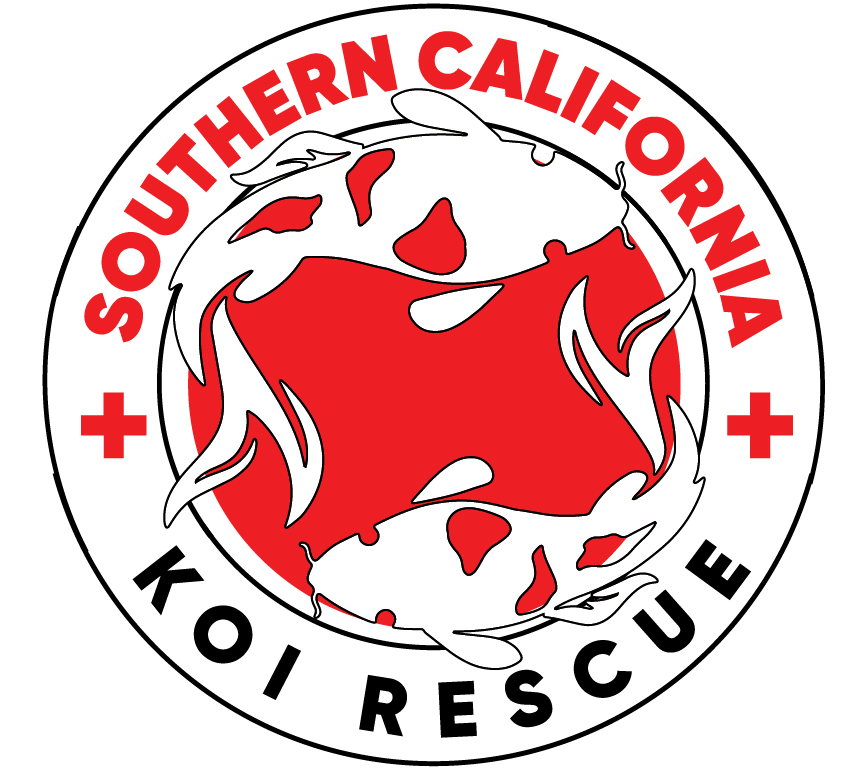We can’t attest to their credibility but if you search online, you can find articles claiming that some koi fish have been known to live for over 200 years. Personally, in our own experience we have rescued many large koi fish which their owners claimed to be well over 30 years of age. Whether they live 30 years or 200 years, the fact is koi often do live a long time. Therefore, acquiring a koi fish is a long-term commitment because there is a realistic chance that your koi fish will ultimately outlive you.
“My new koi fish died because my dealer sold me a sick fish.”
It is VERY common for a hobbyist to purchase a new koi fish from a pet shop or koi dealer, take the fish home then immediately add it to their pond only to watch it die a few short weeks later. Why does this scenario get repeated so often? All your existing fish still inhabiting the same pond seem just fine. So did you purchase a sick fish? Or worse, did the pet store or your koi dealer knowingly sell you a sick fish? Not likely. While illness is always a possibility, in our experience most koi losses actually result from three different factors which conspire together to create the perfect storm for new koi additions. These three deadly factors include (1) significantly increased koi stress levels, (2) common koi parasites, and (3) resulting bacterial infections.
Koi Stress:
Getting chased around with a net, getting bowled, then transported within a bag can be a very stressful experience for koi. This is especially true for large koi which have often grown to their current size over several years spent within a constant environment. This stress greatly weakens the koi slime coat, which serves as their primary defense mechanism. And this weakness quickly creates an opening for opportunistic parasites to strike. And strike they will – with a vengeance!
Koi Parasites:
No matter what you may have read elsewhere, it is virtually IMPOSSIBLE to permanently eradicate all parasites from any established koi pond. Based on our extensive experience having completed literally hundreds of large koi rescues throughout CA, NV, and AZ we can share that many common koi parasites can be found during scoping in virtually any pond. Even in well-maintained ponds with seemingly healthy and happy fish, we commonly find flukes, costia, and other parasites present.
Bacterial Infections:
When koi fish are already badly stressed and also being relentlessly attacked by parasites, this allows for secondary bacterial infections to quickly spin out of control. This is especially true in the case of nasty costia outbreaks, which can seemingly explode overnight out of nowhere. Parasites can also multiply extremely fast, which means the resulting bacterial infections can quickly lead to massive koi losses if appropriate treatment measures are not completed in a swift manner.
So how can you help prevent this same scenario from happening to you?
We strongly believe two things are critically important to help ensure optimal long-term koi health. First, ALWAYS quarantine ALL new koi additions before adding them to your main pond. And second, perform preventative treatments on a regular basis to help guard against common koi parasites.
Visit our Koi Quarantine page to learn about our “quick” 21-day expedited koi quarantine procedures.
Visit our Koi Health page to learn more about effective treatments for common koi parasites.
We hope you have found this page to be useful. Southern California Koi Rescue is a registered non-profit animal rescue specializing in koi fish and other pond pets. Since 2008 our dedicated volunteers have completed hundreds of large koi rescues throughout CA, NV, and AZ while successfully finding new forever homes for thousands of beautiful living jewels. For those interested, charitable donations can be made via our Donations page.
